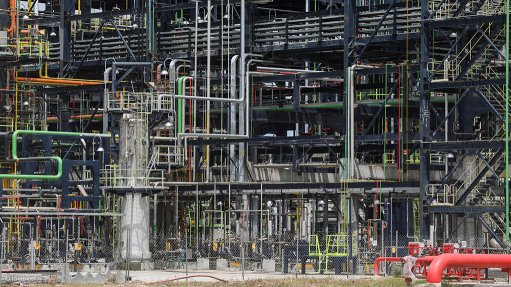Fusion reactors: Tokamak
In ‘nuclear fission’, the nucleus of an atom breaks up into two lighter nuclei. Okay. I will say that again. You get some atoms which are heavier than others, right? Like lead is heavier than iron (that’s why you get more for it at the scrapyard).
So uranium is a heavy atom. If you fire a small particle, called a neutron, at a uranium atom, the atom splits and gives off two more neutrons and some heat. If these two neutrons hit two more uranium atoms, you get four neutrons and more heat. If you do not absorb extra neutrons, these split additional atoms, resulting in a chain reaction that releases a lot of energy. If you control the rate of neutron generation, you can use the heat to make steam and generate power. If you just let the chain reaction go on, you will have an unstable bomblike release of energy. It is this association which often puts people off nuclear power stations.
Fusion (not fission) is what powers the sun. Atoms of tritium and deuterium (modified hydrogen) unite under extreme pressure and temperature to produce a neutron and some helium. With this, an enormous amount of energy is released, several times the amount produced from fission.
So, would it be a good idea to make a ‘fusion reactor’ rather than a ‘fission reactor’? Yes, if you are worried about nuclear power in the form of fission. Using some hydrogen and producing some helium and energy seems much better than using uranium and producing uranium waste.
So, how do we make a fusion reactor? Well . . . let us think: What is the primary characteristic of the sun? It rises in the east? Ohhh yep! It is very hot. About 15-million degrees Celsius. It is this hotness that allows fusion reactions to take place.
The most promising device that produces fusion reaction is the Tokamak, invented by the Russians (pesky Soviets). A Tokamak has a doughnut-shaped vacuum chamber. Inside, heated-up and underpressure gaseous hydrogen fuel becomes a plasma – a very hot, electrically charged gas. The plasma can be controlled by the massive magnetic coils placed around the vessel and the magnetic field keeps the plasma away from the vessel walls.
To start the process, the chamber is evacuated to create the vacuum chamber. Next, the magnets are charged up and the gaseous fuel is introduced. As a powerful electrical current is run through the vessel, the gas breaks down electrically and forms a plasma. As the plasma particles become energised and collide, they also begin to heat up. Auxiliary heating methods help to bring the plasma to fusion temperatures (between 150-million and 300-million degrees Celsius, which is more than ten times the temperature of the surface of the sun).
Plasma particles have such energy that they can overcome their natural electromagnetic repulsion and fuse, releasing huge amounts of energy. To get the magnets to work without cooking up due to electrical resistance, they have to be wound using superconductor wire, niobium-tin. This only goes superconducting at about the boiling point of liquid helium (–268 ºC). Thus, the reactor has a doughnut vessel with incredibly hot plasma and the plasma is kept away from the vessel walls by superconducting superpowerful magnets, kept at about –268 ºC by a supercold refrigerator.
To say this is an engineering challenge is like saying that all you needed to build the Great Wall of China was a committed workforce, some mud and bricks and a view from outer space. But they are building a Tokamak in France, to test. It will produce 500 MW of power for a few minutes, given a 50 MW pulsed input. It will cost $65-billion. But it will lay the way for when the whole of Europe can be powered by a drum of hydrogen. Imagine!
Comments
Press Office
Announcements
What's On
Subscribe to improve your user experience...
Option 1 (equivalent of R125 a month):
Receive a weekly copy of Creamer Media's Engineering News & Mining Weekly magazine
(print copy for those in South Africa and e-magazine for those outside of South Africa)
Receive daily email newsletters
Access to full search results
Access archive of magazine back copies
Access to Projects in Progress
Access to ONE Research Report of your choice in PDF format
Option 2 (equivalent of R375 a month):
All benefits from Option 1
PLUS
Access to Creamer Media's Research Channel Africa for ALL Research Reports, in PDF format, on various industrial and mining sectors
including Electricity; Water; Energy Transition; Hydrogen; Roads, Rail and Ports; Coal; Gold; Platinum; Battery Metals; etc.
Already a subscriber?
Forgotten your password?
Receive weekly copy of Creamer Media's Engineering News & Mining Weekly magazine (print copy for those in South Africa and e-magazine for those outside of South Africa)
➕
Recieve daily email newsletters
➕
Access to full search results
➕
Access archive of magazine back copies
➕
Access to Projects in Progress
➕
Access to ONE Research Report of your choice in PDF format
RESEARCH CHANNEL AFRICA
R4500 (equivalent of R375 a month)
SUBSCRIBEAll benefits from Option 1
➕
Access to Creamer Media's Research Channel Africa for ALL Research Reports on various industrial and mining sectors, in PDF format, including on:
Electricity
➕
Water
➕
Energy Transition
➕
Hydrogen
➕
Roads, Rail and Ports
➕
Coal
➕
Gold
➕
Platinum
➕
Battery Metals
➕
etc.
Receive all benefits from Option 1 or Option 2 delivered to numerous people at your company
➕
Multiple User names and Passwords for simultaneous log-ins
➕
Intranet integration access to all in your organisation


















